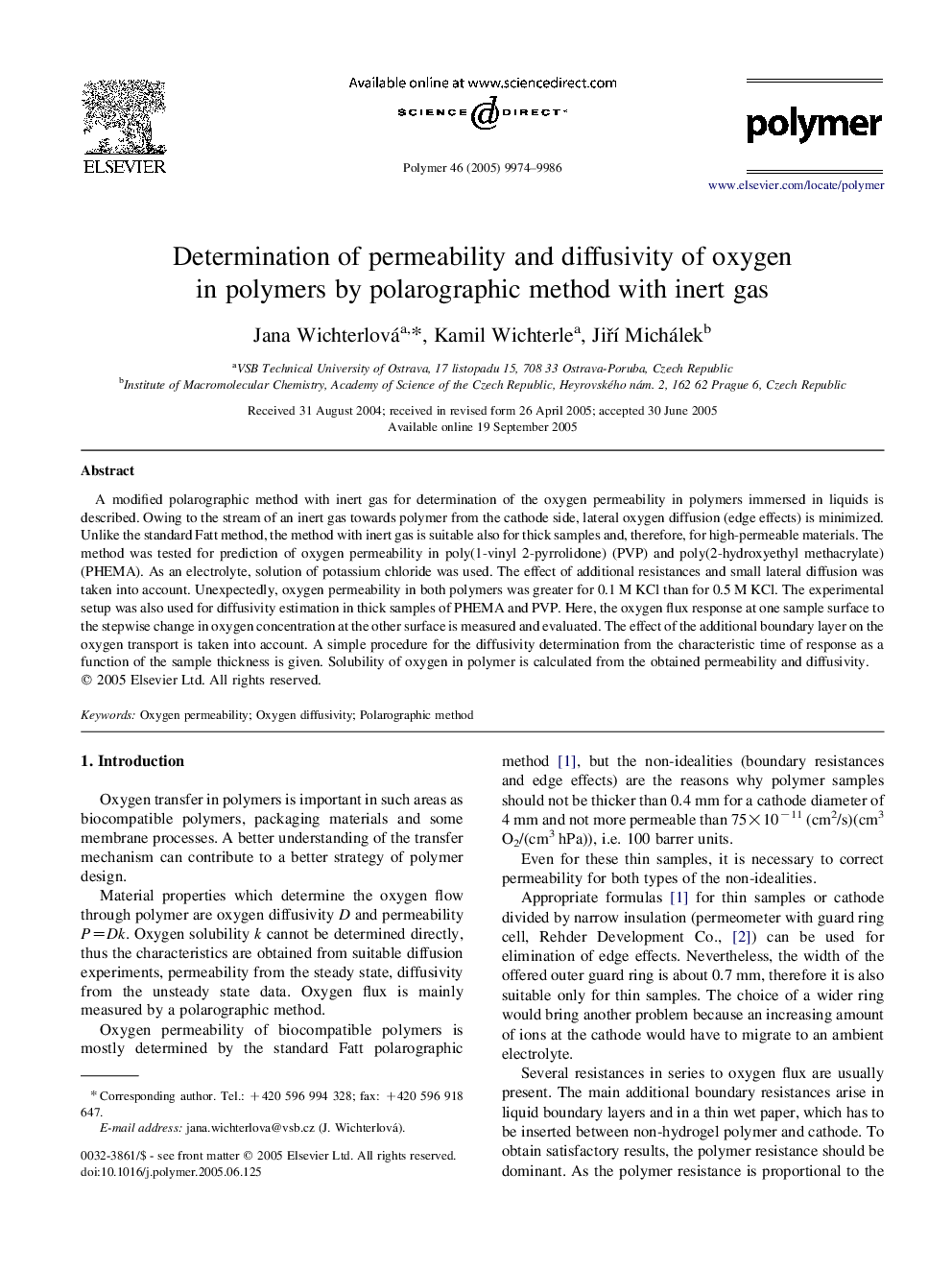| Article ID | Journal | Published Year | Pages | File Type |
|---|---|---|---|---|
| 5189867 | Polymer | 2005 | 13 Pages |
Abstract
A modified polarographic method with inert gas for determination of the oxygen permeability in polymers immersed in liquids is described. Owing to the stream of an inert gas towards polymer from the cathode side, lateral oxygen diffusion (edge effects) is minimized. Unlike the standard Fatt method, the method with inert gas is suitable also for thick samples and, therefore, for high-permeable materials. The method was tested for prediction of oxygen permeability in poly(1-vinyl 2-pyrrolidone) (PVP) and poly(2-hydroxyethyl methacrylate) (PHEMA). As an electrolyte, solution of potassium chloride was used. The effect of additional resistances and small lateral diffusion was taken into account. Unexpectedly, oxygen permeability in both polymers was greater for 0.1Â M KCl than for 0.5Â M KCl. The experimental setup was also used for diffusivity estimation in thick samples of PHEMA and PVP. Here, the oxygen flux response at one sample surface to the stepwise change in oxygen concentration at the other surface is measured and evaluated. The effect of the additional boundary layer on the oxygen transport is taken into account. A simple procedure for the diffusivity determination from the characteristic time of response as a function of the sample thickness is given. Solubility of oxygen in polymer is calculated from the obtained permeability and diffusivity.
Related Topics
Physical Sciences and Engineering
Chemistry
Organic Chemistry
Authors
Jana Wichterlová, Kamil Wichterle, JiÅÃ Michálek,
